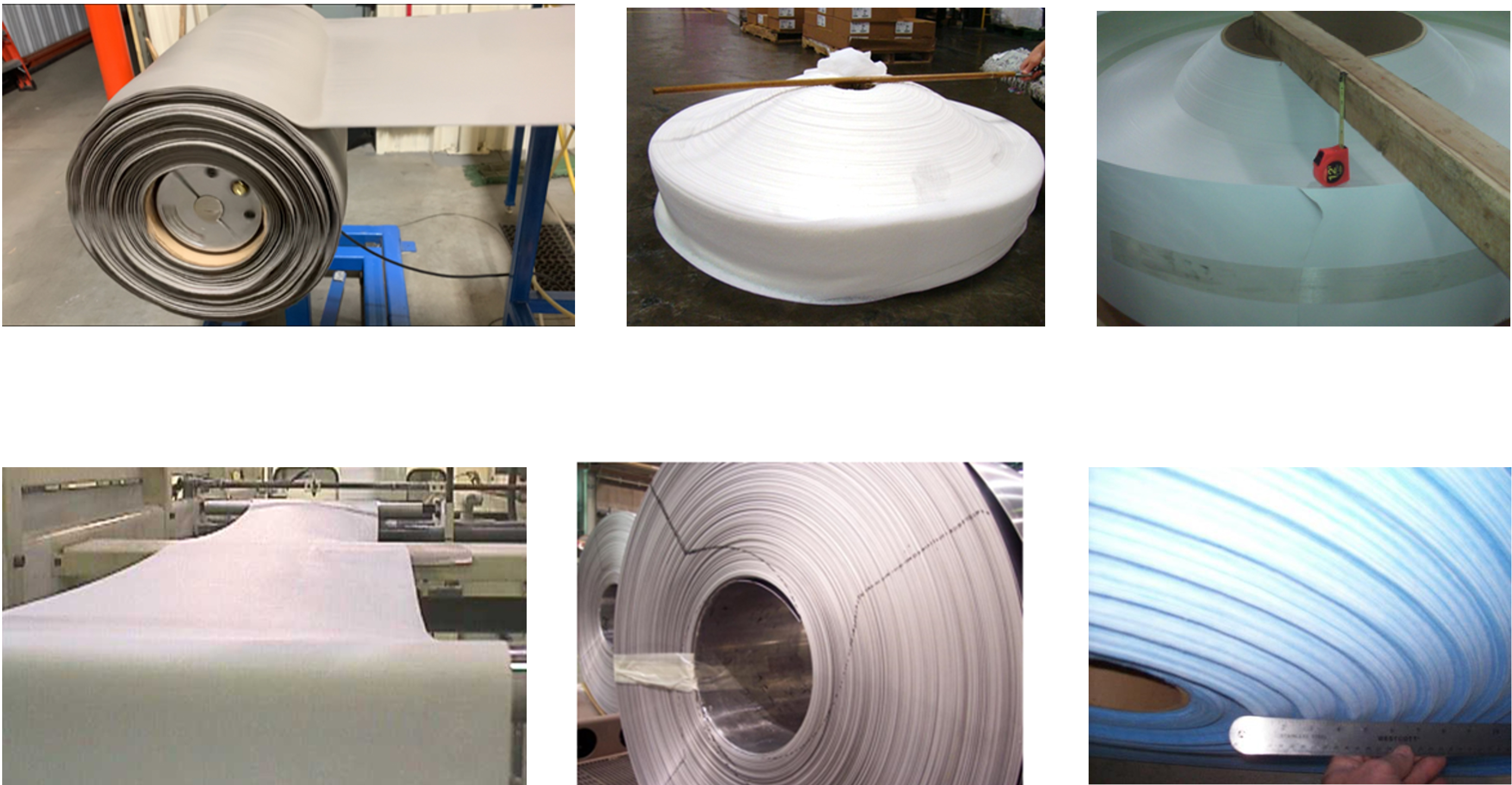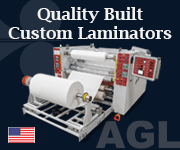Featured Stories
-
Three Common Types of Coating and Laminating Defects and the Methods of Inspection to Catch Them
You're close to securing a new contract and the client wants to know more about your quality control processes. -
-
Speaking the Language of Sustainability for Printers and Converters
Those of us who have spent time in the printing and packaging industry know it's a sector marked by incredible innovation, ingenuity and...
News | New Products
-
Anderson & Vreeland, Inc. Hires Kelly Conner as a Business Development Manager for Liquid, Thermal, Solvent & Water-Wash Photopolymers
Anderson & Vreeland, a privately held company with over 60 years of experience as a leading supplier of printing...
-
New Milestones for Vapor Pipe Shield Propel Momentum Toward New Industry Standard
Spring 2025 has seen exciting developments for the Vapor Pipe Shield, a patented technology from General Air Products (GAP)
-
Veritiv Continues to Invest in Print Solutions to Offer Customers Best-in-Class Products and Services
Veritiv Operating Company, America's premier print solutions provider, announced its leading coated paper brand, Endurance
-
MicroDynamics and BW Converting Partner to Advance Anilox QC Automation
MicroDynamics, innovative manufacturer of surface profile inspection systems, and BW Converting, leading provider of printing
-
INX International launches Innova Plus NCF: Nitrocellulose-Free inks for Sustainable Packaging
INX International has added a valuable new universal lamination system to its sustainable inks portfolio.
-
Quality Control Solutions for Silicone Release Coaters
Do your quality control tools give you the confidence to make fast, informed decisions — whether in-line or at-line?
-
Leadership in Converting through Static Control Solutions
TAKK Industries is an early innovator in the static elimination field, originating best in class static control solutions since 1943.
Expert Advice
Winding Part 5: Solutions for Common Wound Roll Defects
- Published: April 04, 2023
By Neal Michal, Principal, Converting Expert, LLC
Wound roll defects are anything that results in a disappointed customer. Seven common defects will be presented here based on severity. Tacky webs tend to block. Narrow slits tend to dish. Slick webs tend to telescope. Larger rolls tend to be floppy. High loft webs will experience caliper loss. Web width will vary on webs with high Poisson ratio. Concentric rings are one example of a visual defect.
Roll defects are a result of the physics of winding, the resulting wound roll structure and web properties. Review the previous articles in this series: Part 1 - Wound roll structures; Part 2 - Document thru-roll stress and strain; Part 3 - Winder TNTs and Wound-On-Tension; Part 4 - Best Practices. My previous series on Material Properties provides information on important material properties and how to document the entire roll.

Blocking
Blocking is common on tacky films, adhesive laminates, elastics and foam. First, identify the root cause. Is it the chemistry, high temperature or simply wound too tight? If blocking is only near the core, reduce local TNTs or wind on larger cores. Reduce web temperature entering the winder. Increase topography on a film to introduce air into the roll. Ask for different chemistry. Try different lay on nip roll covers and nip load. Consider winding in a sacrificial layer or refrigerated shipping for high value webs.
Dishing
Dishing is common on narrow slits. Identify the root cause. Does it occur during winding, in storage or after shipping? A detailed study of roll handling, packaging, shipping and aging may be required. Increase the width-to-diameter ratio. Loosely wind web into wide parent rolls, age and then slit, rewind. Reduce tension or nip. Add center assist torque. Develop improved packaging and handling techniques.
Telescoping
Telescoping is common on slick webs. This defect is a result of low torque capacity which is a function of Web-Web COF, Interlayer pressure and the Roll OD/Core OD ratio. The minimum torque capacity will typically be 1-2 inches from the core.
Telescoping during unwinding is more common compared to winding. Document the slip plane diameter. Strike a line across the roll before unwinding. Note the diameter where the roll slips. Document your interlayer pressure. Determine if there is a discontinuity in the winding process at this diameter. The standard approach is to increase Winder TNTs out beyond this location. Try reducing tension or acceleration rate on the unwind. If your roll is heavy, add a motor to start the roll from a dead stop.
If the roll slips during winding, try increasing nip load, then tension near the core. Add center assist to provide torque to the building roll. On a continuous winder, bring the roll to a more gradual stop. Eliminate any sudden TNT changes near the slip plane. Don’t stop and restart in the middle of a roll. Consider winding on larger cores or winding a smaller roll OD. If possible, increase the web-web coefficient of friction.
Floppy Edges, Baggy Lanes, Web Camber
Poor “Lay Flat” is the most common cause of wrinkles. It is ubiquitous across all web processes. The root cause will be a persistent cross deckle (CD) variation. Most likely suspects include caliper, basis weight, moisture or temperature. Identify and reduce cross deckle variations. Reduce roll density. Reduce web temperature before entering the winder and in storage. If possible, wind the web loose; allow it to age and rewind it to final dimensions.
Caliper Loss Near the Core
It is common for high loft webs to experience 25-60 percent caliper loss near the core. Thru-roll caliper is a function of the interlayer pressure profile (ILP). Measure ILP and correlate to average roll density. They will be related. Implement coreshaft relieving for surface winders. Trial three increments of lower roll density. Repeat measurements. Increase core OD or reduce Roll OD. Reduce the web temperature or moisture before the winding process. Control temperature or moisture in storage.
Slit Width Growth
Webs with high Poisson ratio will tend to grow laterally. The width thru the middle of the roll will increase. Document how width varies as a function of diameter and after aging. Reduce wound on tension. Replace draw control with tension loop control. Reduce web temperature before the winding process and in storage. Consider refrigerated shipping when called for. Use a large taper tension on the last 10 percent of the roll length to salvage the material near the outside diameter.
Concentric Rings
Concentric rings on the slit edge of the roll is one example of a visual defect. It may not cause a converting issue. Concentric rings are common when nip load changes. Measure friction in your winding arms and coreshaft rolling resistance on the kitchen rail. Remove debris from or replace damaged kitchen rails. Lubricate the pivot points. Replace worn or damaged parts. Surface winders benefit from sloping the kitchen rails away from the winding drum. If the rings only appear near the outside of the roll, increase drum to web traction or nip load. Adding a center assist motor to provide torque to the coreshaft is a proven solution to building larger rolls with improved consistency.
This concludes our five-part winding series. Thank you for reading and please do not hesitate to contact me at the email below with any questions.
ABOUT THE AUTHOR
Neal Michal of Converting Expert is a well-known authority in web handling, process design and optimization. He worked with the Web Handling Research Center for 20 years. Currently serving as a technical advisor with AIMCAL, he can be reached at neal@convertingexpert.com or through www.convertingexpert.com.























